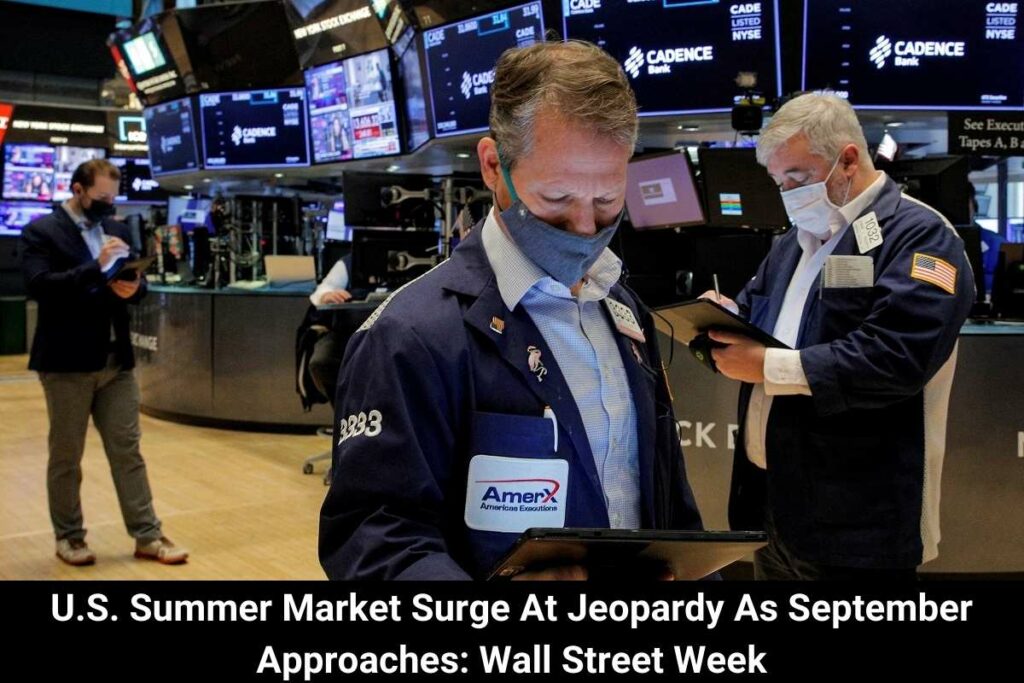Reuters, NEW YORK, August 26 – The S&P 500’s 13% increase from its June lows will soon enter what has traditionally been the most difficult month for the American stock market, giving some fund managers anxiety about a general selloff in September. The S&P has been in a bear market since its early-year decline as investors priced in the likelihood of aggressive Federal Reserve interest rate increases, but it has recently had a robust rally that has allowed it to recover half of its annual losses.
Strong results from leading corporations and indications that inflation may have peaked have also contributed to the bounce, which may allow the Fed to scale back rate increases. View More, However, as traders and investors return from their summer vacations, some are concerned about a rougher ride in September, in part owing to seasonal worries and in part due to anxiety about the Fed’s pace of hikes and the impact on the economy that would follow. According to the Stock Trader’s Almanac, September is traditionally a bad month for the stock market because fund managers have a propensity to sell underperforming positions as the conclusion of the third quarter draws near.
“We’ve had a fantastic run,” said Jack Janasiewicz, head portfolio strategist at Natixis Investment Management Solutions, “and I wouldn’t be stunned if the market takes a knock here.” According to Janasiewicz, the S&P 500 might decline by as much as 10% in September as investors prepare for the possibility that the Fed won’t begin lowering interest rates as soon as some had planned. According to CFRA data, September has historically been the weakest month for the S&P 500, with the index rising only 44% of the time, the lowest percentage of any month.
The S&P 500 has experienced its lowest performance of any month in September, with an average loss of 0.6%. The index has lost 13.1% of its value so far this year. A nearly 14% increase since June, when the index fell to its lowest point since December 2020 and entered a bear market following the Fed’s announcement of its highest rate hike since 1994, has contributed to that performance. One of the main factors contributing to the bleak outlook is the expectation that the Fed will keep raising interest rates and maintain them above the neutral rate for a longer period of time than markets had previously anticipated, which will have an adverse effect on consumer demand and the housing market.
According to the CME FedWatch tool /FED WATCH, nearly 50% of market players now anticipate that the fed funds rate would rise beyond 3.7% by the end of the year, up from 40% a week ago. Currently, the fed funds rate ranges from 2.25 to 2.5 percent. Market players will be looking for any indications of how long the Fed Chair anticipates raising rates when he talks on Friday. Powell, who will deliver the keynote address at the annual monetary policy conference of the Kansas City Federal Reserve in Jackson Hole, Wyoming, may make use of the occasion to quell market hopes for lower borrowing prices in 2023.
According to Sam Stovall, chief investment strategist at CFRA, the upcoming FOMC meeting on September 20 and 21 will also likely increase volatility over the month, causing the S&P 500 to drop close to its June lows. Prior to that, important economic data will be released, such as a reading on consumer prices that will help investors determine whether inflation has peaked. However, the index may continue to rise until December, according to the significant rally since June, Stovall noted. History indicates that we won’t record a new low, even though we might end up testing the low from June.
According to a Bank of America study released on August 16, while fund managers as a whole continue to be negative, the ratio of bulls to bears has increased since July, decreasing the possibility of outsized gains in the coming months. For the first time in eight weeks, the bank’s clients sold US equities on the net last week, indicating that investors may be becoming more cautious. Meanwhile, according to Goldman Sachs, hedge fund’s use of leverage, a gauge for their propensity to take risks, has stabilized since June and is currently close to its lowest point since March 2020.
As the Fed continues to stress that it will maintain rates until they see signs of the labor market cooling, investors may continue to rotate out of cyclical, value-oriented stocks that profit from rising inflation and into technology and other growth stocks that can take market share despite an economic slowdown, according to Tiffany Wade, senior portfolio manager at Columbia Threadneedle Investments, who is overweight mega-cap stocks like Amazon.com and Microsoft Corp. We anticipate that some of the riskier names, which have increased significantly since June, will be the first to experience a pullback.
For more news like this stay tuned with newsconduct.com

